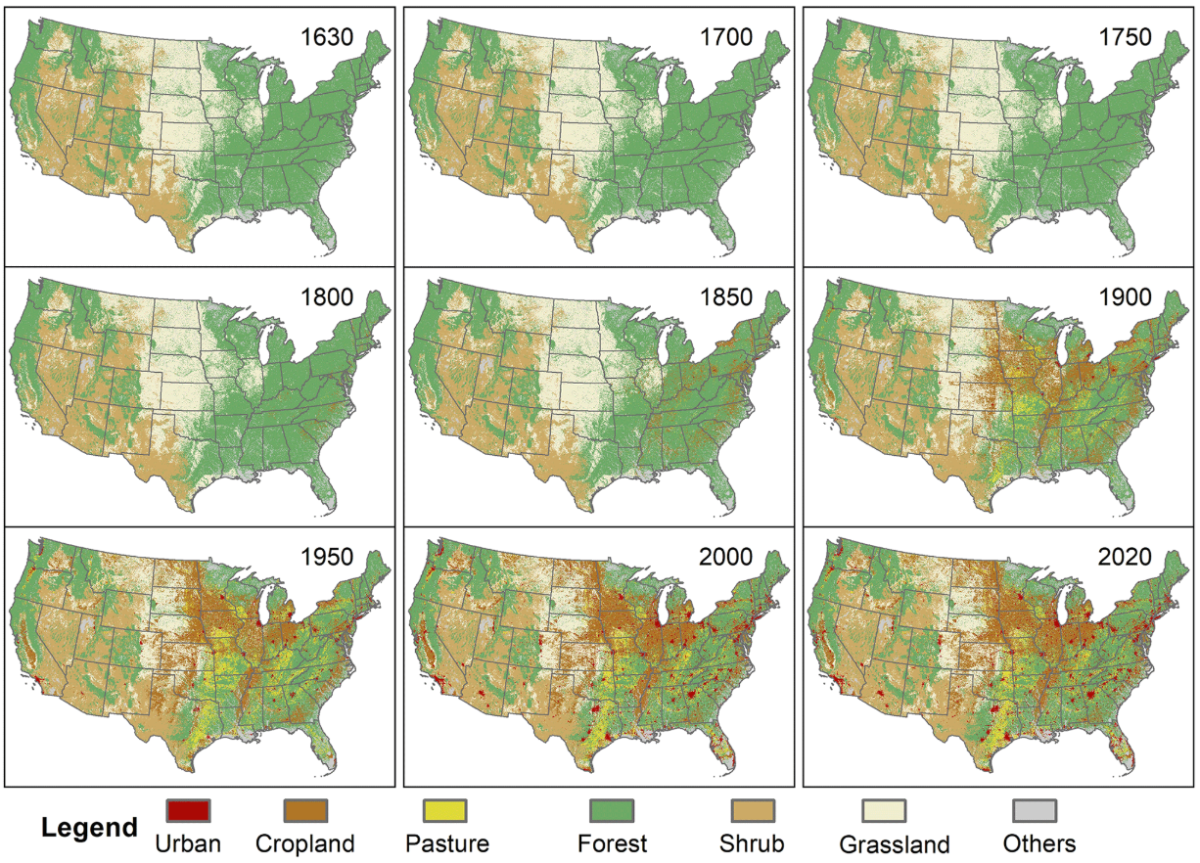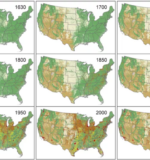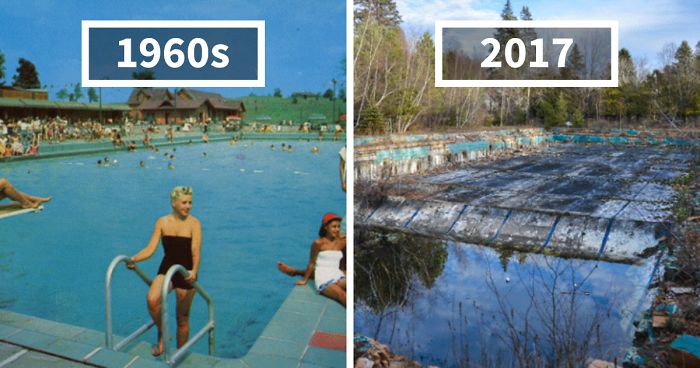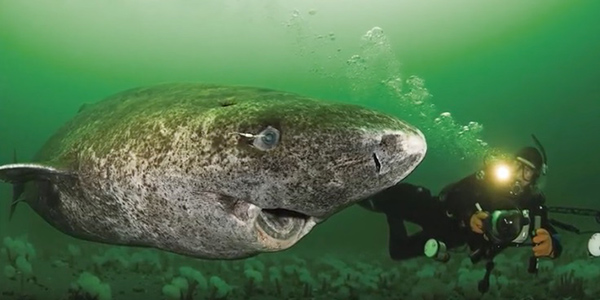Over the past four centuries, the United States has undergone a dramatic transformation, with vast stretches of forestland giving way to agriculture, urban development, and industry.
Once covering a significant portion of the country, forests have been steadily shrinking since the 1600s as human settlement expanded westward.
New research by Earth System Science Data reveals the extent of this decline, showing how once-dense woodlands have been replaced by croplands, pastures, and sprawling cities.
Why It Matters
The research comes as Donald Trump signed a new executive order this month to decrease U.S. reliance on foreign lumber.
The order could result in the felling of millions of trees in the U.S.
What To Know
America’s forests have undergone significant changes over the past several centuries, shaped by deforestation, urbanization, agriculture, and conservation initiatives. Once covering over a billion acres, the nation’s forested land has declined dramatically due to human activity.
A map published by Earth System Science Data shows the dramatic decrease in forest-covered land in the United States since the 17th century.
Before European settlement in the early 1600s, forests covered an estimated 1.023 billion acres of what is now the United States. The eastern portion of the country was heavily forested, while the Great Plains and western regions contained vast expanses of grasslands and shrubs. However, large-scale deforestation began in the 19th century, driven by agriculture, industrial logging, mining, railroad expansion, and urban growth. By 1860, about 153 million acres of forest had been cleared for farming, with an additional 11 million acres lost to industrial activities, particularly in the eastern states. By 1920, U.S. forest cover had reached its lowest point at approximately 721 million acres.
Recognizing the alarming loss of forests, the U.S. government and conservationists launched efforts to protect and restore woodland areas in the early 20th century. National forests were established, and policies promoting sustainable forestry practices were introduced. By the mid-1900s, deforestation had slowed, and abandoned farmland allowed some forests to naturally regenerate. Reforestation programs also helped mitigate earlier losses, leading to a more stable forest area.

Today, the U.S. has an estimated 765 million acres of forest land, covering about 33 percent of the country’s total land area. While the overall forested area has remained relatively stable for the past century, new challenges now threaten these ecosystems such as climate change, wildfires, disease outbreaks, and continued urbanization.
Since the early 1600s, the U.S. has experienced a net loss of approximately 258 million acres of forest.
And that number could be set to increase amid Trump’s recent executive order which allows the U.S. Department of Interior and Department of Agriculture to bypass the Endangered Species Act protections to ramp up timber sales, ultimately resulting in the clear-cutting of massive tracts of federal forests.
The goal of the executive order is to reduce the United States’ dependency on foreign timber, particularly from Canada, which supplies approximately 25 percent of the U.S.’s lumber demand. In 2022 alone, the U.S. imported over 12.7 billion board feet of lumber from Canada. In comparison, the U.S. had around 765.5 million acres of timberland available for domestic production. To replace the volume of lumber imported from Canada, about 17 million mature pine trees—each 80 feet tall and with a 2-foot diameter—would need to be harvested from U.S. forests.
This order comes amid growing tensions between the U.S. and Canada, especially after President Trump imposed significant tariffs on Canadian lumber. These tariffs have strained trade relations, and Trump has also made public remarks suggesting Canada could one day join the U.S. as the 51st state. The new executive order reflects efforts to reduce reliance on foreign imports and strengthen domestic timber production, even as it raises questions about the potential environmental impact and sustainability of such an approach.
What Happens Next
The exact impact of Trump’s executive order is still unclear, but it could lead to millions of trees being cut down and, therefore, a further decrease in forest-covered land in the U.S.
Credit: www.newsweek.com








 Photographer Finds Locations Of 1960s Postcards To See How They Look Today, And The Difference Is Unbelievable
Photographer Finds Locations Of 1960s Postcards To See How They Look Today, And The Difference Is Unbelievable  Hij zet 3 IKEA kastjes tegen elkaar aan en maakt dit voor zijn vrouw…Wat een gaaf resultaat!!
Hij zet 3 IKEA kastjes tegen elkaar aan en maakt dit voor zijn vrouw…Wat een gaaf resultaat!!  Scientists Discover 512-Year-Old Shark, Which Would Be The Oldest Living Vertebrate On The Planet
Scientists Discover 512-Year-Old Shark, Which Would Be The Oldest Living Vertebrate On The Planet  Hus til salg er kun 22 kvadratmeter – men vent til du ser det indvendigt
Hus til salg er kun 22 kvadratmeter – men vent til du ser det indvendigt  Superknepet – så blir snuskiga ugnsformen som ny igen!
Superknepet – så blir snuskiga ugnsformen som ny igen!  Meteorite That Recently Fell in Somalia Turns Out to Contain Two Minerals Never Before Seen on Earth
Meteorite That Recently Fell in Somalia Turns Out to Contain Two Minerals Never Before Seen on Earth  Nearly Frozen Waves Captured On Camera By Nantucket Photographer
Nearly Frozen Waves Captured On Camera By Nantucket Photographer  It’s Official: Astronomers Have Discovered another Earth
It’s Official: Astronomers Have Discovered another Earth 